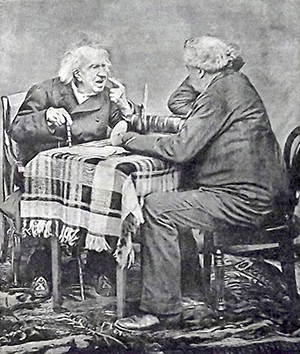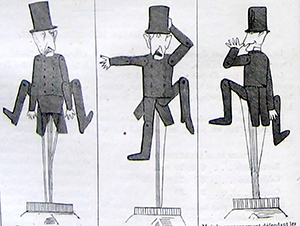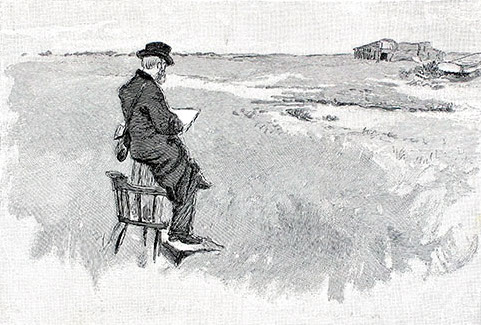-
Nadar IV: Press graphics 1858 – 1905

The popular Salon caricatural-series “Nadar Jury”, which he created in collaboration with the history painter Alfred Darjou for Charles Philipon’s new cartoon magazine “Journal amusant”, reveals Nadar’s critical attachment to the contemporary art scene. In 1863 his enthusiasm for aerial photography got a setback when his giant balloon “Le Géant” crashed on a field near […]
-
Félix Nadar III: Petit Journal Pour Rire 1856

The photographic studio that Nadar ran since 1855 did not prevent him from continuing his press-graphic work. The following year, he supported his friend Charles Philipon in the publication of a smaller offshoot of “Journal pour rire” as a co-editor and chief cartoonist.
-
Nadar I: Revue Comique 1848 -1849

Before he became famous as a society photographer, a ballonist and a patron of the Impressionists, Gaspard-Félix Tournachon was known under his penname Nadar as one of the most inventive French cartoonists of the era. In the revolutionary year 1848 the republican activist started to work for the caricature journal “Le Charivari” of his friend […]
-
Escapes: William Hogarth and the Consequences I: The Portrait.

Not translated: I. Das Porträt Fünfundsiebzig Jahre nach seinem Tod tauchte William Hogarth als Akteur in dem Dokumentarroman Jack Sheppard von William Harrison Ainsworth auf, der ab Januar 1839 als Fortsetzungsgeschichte in dem vom jungen Charles Dickens herausgegebenen Literaturmagazin Bentley´s Miscellany abgedruckt wurde. Auch in The Portrait , einer der Illustrationen des Romans, die von […]
-
George Montbard II: Master of the Multipanel

From the early Eighties on George Montbard became mainly known for his illustrated travelogues from the Greater Maghreb. But he was also a wanted editorial illustrator, who managed to translate the blurred photographs and rough sketches of his collagues into exciting and catchy graphics. He developed a very special mastery in the field of the […]
-
George Montbard I: A communard´s career in London

George Montbard (real name: Charles Auguste Loye) was one of the most brillant and versatile illustrators of the 19th century. The staunch republican started his career as a political caricaturist during the imperial rule of Napoleon III. He worked for “La Rue”, the legendary antiautorical magazin of his friend Jules Valles. The anarchist author assembled […]
-
Henry James: Image & Text II

Not translated: Das Feature zu Henry James´ gesammelten Essays zur Illustrationskunst, die 1893 unter dem Titel Picture and Text im Verlag Harper & Brothers in New York erschienen sind, gibt ausschnitthaft und in collagierter Form einige Passagen aus der kommentierten deutschen Erstübersetzung wieder, die jetzt im Piet Meyer Verlag erschienen ist. Das Vorwort stammt von […]
-
The Art of Louis Sabattier II: 1900 – 1918

Many of Louis Sabattier´s soft focussed photo-paintings for the French magazine L Illustration conveyed a ambiguous cultural – critical content. Especially his popular scenes of colonial tourism could easily be read as a subversive comment on the Eurocentric perspective of the oriental painting tradition of his teachers Jean-Léon Gérôme and Gustave Boulanger. Exoticism and alienness, […]
-
The Art of Louis Sabattier I: 1897 – 1904

The trained history painter Louis Sabattier was one of the most interesting press illustrators of the late 19th century. None of the numerous accredited special artists managed to catch the tense atmosphere of the spectacular trials against Alfred Dreyfus and Émilé Zola in a comparable subtle way. Many of his soft focussed photo-paintings for the […]
-
Doré´s works for “Journal pour Rire” (1847-51) – II

Thirteen years before his coeval successor Wilhelm Busch began his career at the Munich “Fliegende Blätter”, young Gustave Doré had already established a mature and distinct Comic imagery in Charles Philipon´s groundbreaking “Journal pour Rire”. Doré´s Art of Comic was a livley blend of various influences: The loose improvised “romans en images” of Rodolphe Töpffer […]